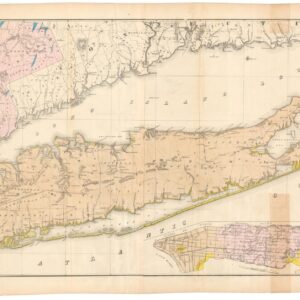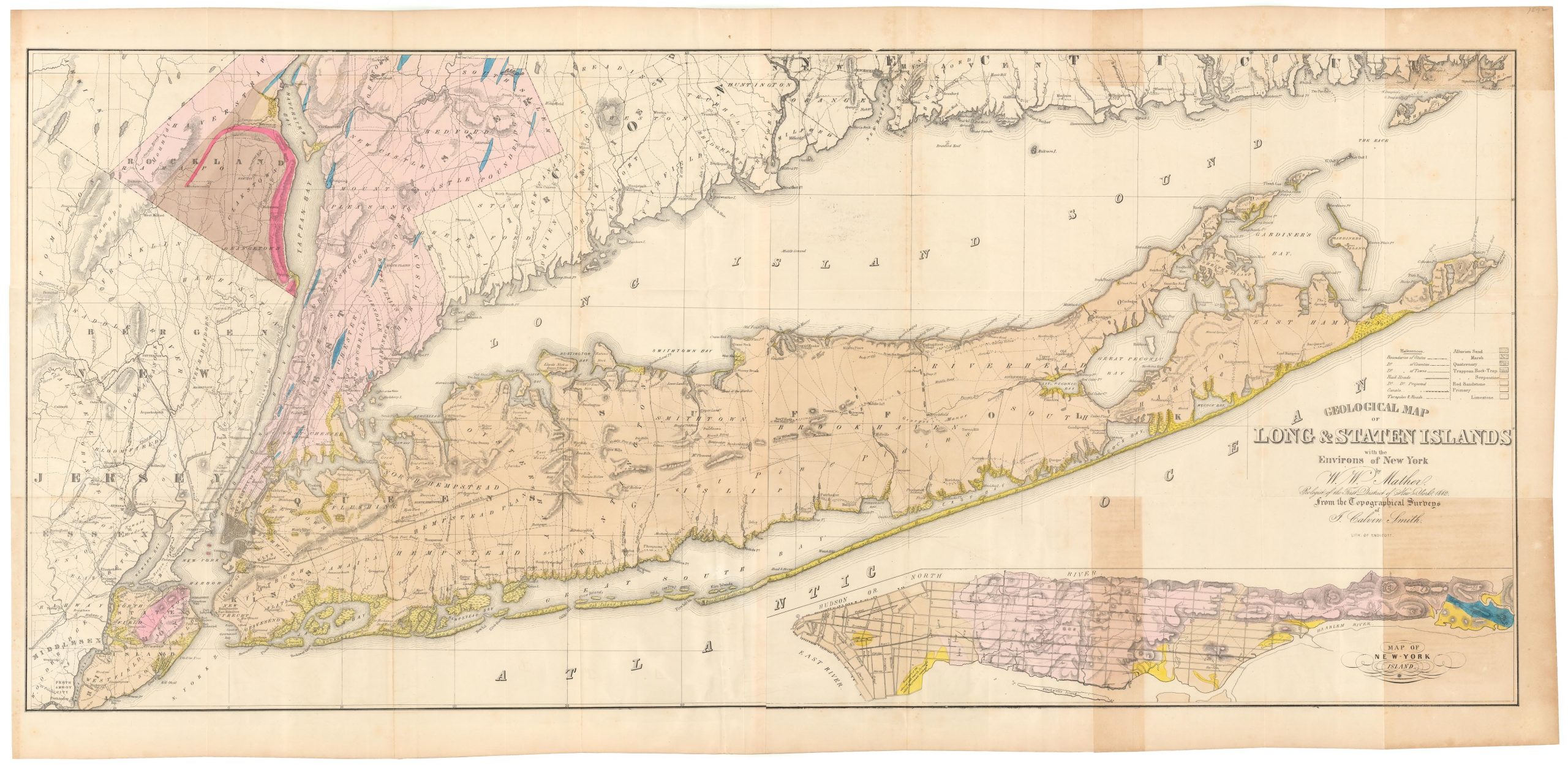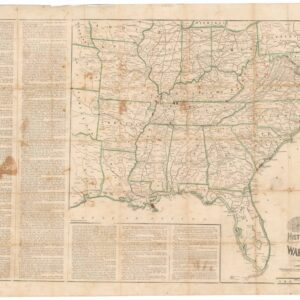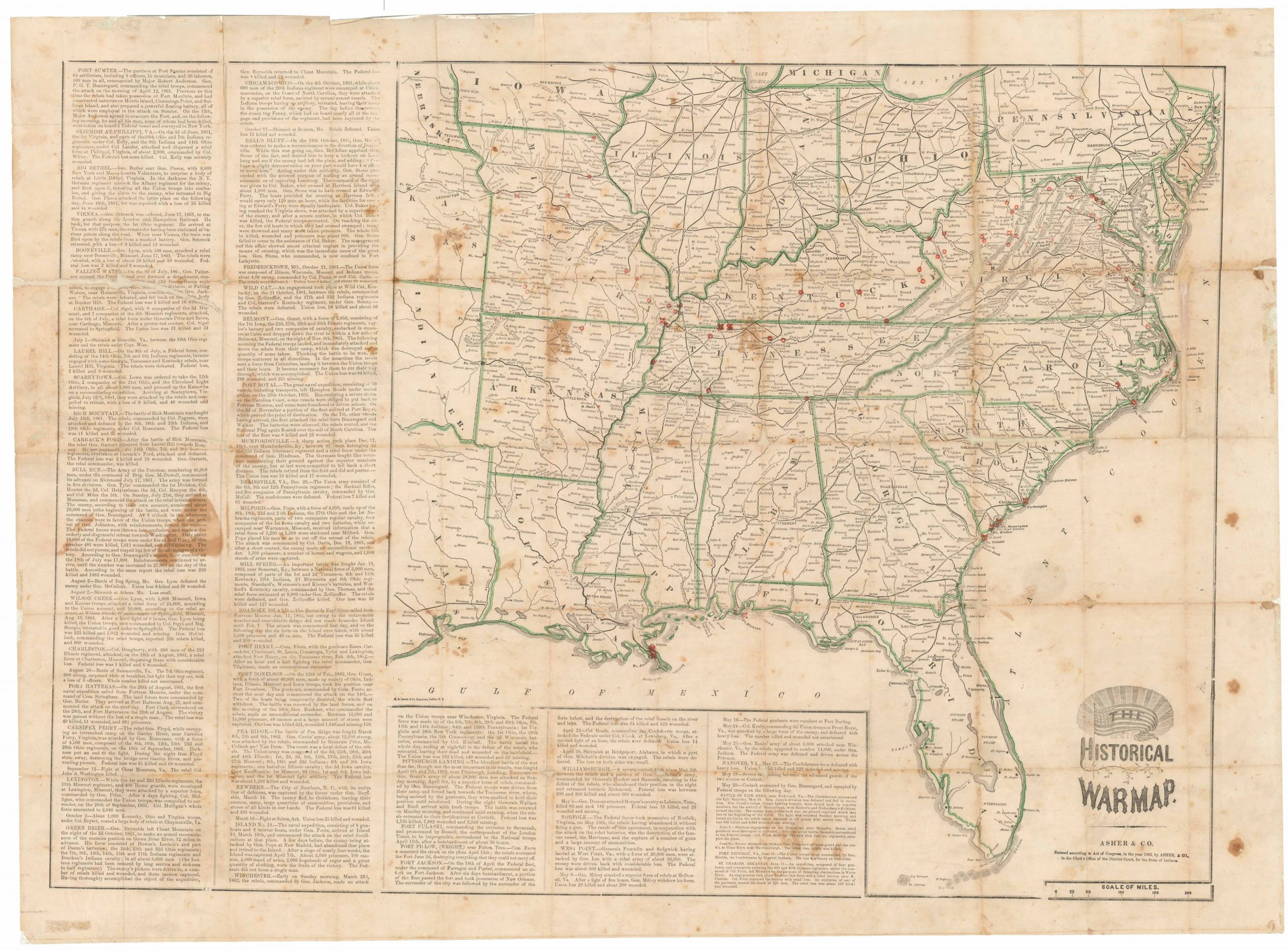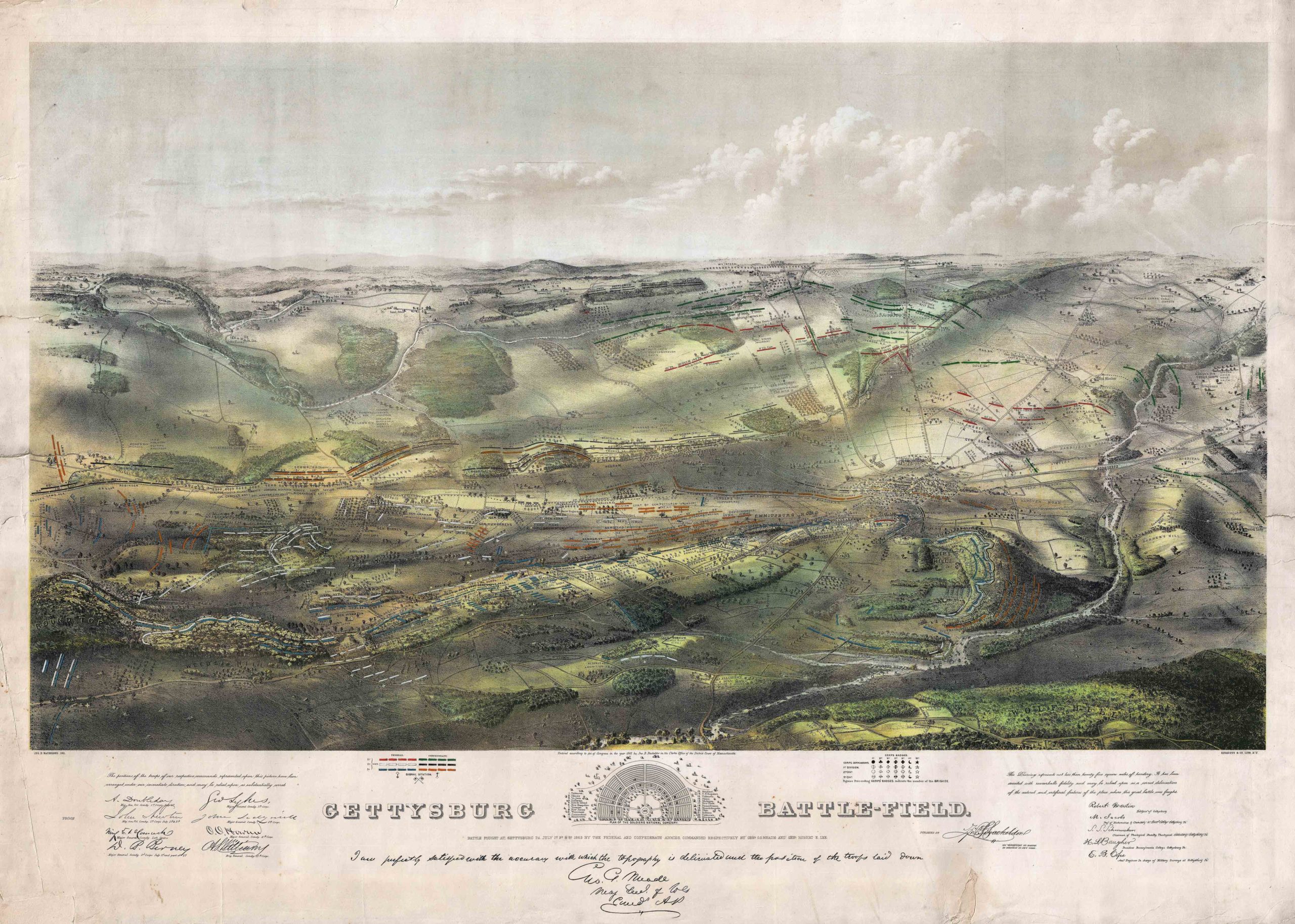Alexander Bache’s Map of Eastern Virginia: a Union map of Washington’s Confederate backyard.
Map of Eastern Virginia Compiled from the best authorities and printed at the Coast Survey Office, A.D. Bache, Supdt. 1862.
$1,700
1 in stock
Description
A vivid reminder of just how entrenched divisions were between the Union North and Confederate South in the early years of the Civil War (1861-1865).
Alexander Bache’s map of Eastern Virginia and Delaware is an extraordinary historical artifact that brings the difficult years of the Civil War to life. Published in 1862 by Philip & Solomons of Washington D.C., it was originally commissioned and compiled for the United States Government with the particular ambition of creating an in-field tool for the soldiery engaged in the ongoing and increasingly bloody conflict. The map was compiled by W.L. Nicholson under direction of Alexander Dallas Bache, Superintendent of the U.S. Coast Survey. It was subsequently engraved by Charles Krebs and printed as a lithograph.
The map was issued at the height of the Civil War and provided a full overview of Eastern Virginia and the Delaware Peninsula. Particular focus was on the the ‘capitals’ of Washington D.C. and Richmond and their hinterlands. Underlining the ambitions of the cartographic office that created it, the map depicts the enemy capital with concentric circles emanating from it at 10-mile intervals. These provided a quick overview of the approach to the city and an easy visualization of how quickly an army could move through the landscape. The circles around Richmond were marked in red (a color also used for the railroads). Interestingly, in some issues of the map, a similar encirclement of Washington is seen in Union blue; being an early issue, this is not the case with our map however.
Bache’s map of Eastern Virginia was one of many new Government maps that were meant to be used in the field by Union officers engaged in combat with the Confederacy. In the early years of the Civil War, resistance was fierce in Virginia. For many ordinary citizens, proximity highlighted the deepness of the rift, in that most Washingtonians viewed Virginians as their friends and neighbors. These were likeminded Americans, yet willing to secede and see the Union for which they had all fought so hard dissolved. Virginia’s geographic proximity to Washington made it a dangerous place of sedition, and one where the Government would like to see the rebels subdued, if not defeated. Bache’s map is a manifestation of this ambition. It was meant to be used to fully comprehend the landscape and its possibilities, while also providing a more regional overview in the same map. Its compilation was, in other words, very carefully thought through.
Even though the map clearly was compiled for strategic military purposes, the U.S. Government also used charts and renditions of the war arena as commercial commodities, selling a wide variety of government issued maps to the public and using the proceeds to sustain the war effort. Bache’s map of Eastern Virginia was one such map. Despite its passage into the commercial sphere, Bache’s map was an extraordinary piece of military cartography and graphic engineering. It is extremely rich in detail, providing toponyms, infrastructure, and detailed topographic features throughout. The map follows the coastline, stretching from Southern Pennsylvania and Philadelphia in the north, to the North Carolina border in the south.
The map’s impressive topographical detail would have provided officers in the field with a reliable overview of both vantage points and pitfalls in the landscape, as well as key points of infrastructure and supply lines. This is seen for example in the careful plotting of rivers and creeks and their clear association with settlements, towns, and perhaps most importantly, roads. Another vital piece of infrastructure carefully marked on this map are of course the railroads, which were crucial in the transport and supply of troops and munitions. Marked in thick red lines, the railroads are highlighted above all other elements on the map, underscoring just how critical they were in winning the war.
The natural landscape has also been carefully integrated onto the map. Ridge lines immediately to the west of Washington are carefully rendered including mountain passes and the exact physiographical relationship between the minor ridge lines. Understanding this landscape was of course paramount in the defense of the capital. The ridge lines stretch south to cover what today constitutes the Monongahela National Forest and the George Washington and Jefferson National Forest.
The map is nicely framed in a double frame line and capped by an elegant but rather humble title. A small scale bar separates the title from the map itself. It comes in its original embossed case with the title stamped in gilt lettering upon it. A faded stencil or stamp on the interior of the case reads JY Harcourt, while a pencil annotation on the back of the map itself says ‘1862’.
Context is everything
During the American Civil War (1861-65), the United States Coast Survey played an important role in the production of military field maps. The Coastal Survey Office was originally established for hydrographical mapping and largely employed hydrographers and hydrographic engineers. However, leading up to the war, a new Superintendent, Alexander Bache, streamlined production and work routines and created one of the best cartographic institutions in the world. Thus, at the outset of the war, it quickly became apparent that the Coast Survey Office was the best qualified government agency for the rapid compilation and assimilation of available cartographic sources. The goal was to produce detailed and up-to-date maps and sea charts that could aid the Union Army and Navy in their confrontations with the South. Having the accurate and updated charts could often mean the difference between victory and defeat, life and death. And access to the U.S. Government’s archives and resources gave the Union forces a significant strategic advantage.
The war did not just entail the compilation of new maps and charts, but also prompted innovations in how they were produced and distributed. New printing presses were not only faster and more accurate in their print lines, but in some cases they were also made mobile, allowing printing to take place in the field if need be. Many of the printing innovations associated with the Civil War were ideas purported by the surveyors and engineers of the U.S. Coast Survey, some of which went on to become renowned cartographic pioneers as a result. Among these men was Alexander Dallas Bache.
Cartographer(s):
Alexander J. Bache was an American physicist, chemist, and cartographer from Philadelphia. He was the great-grandson of Benjamin Franklin.
Bache was known for conducting detailed surveys of the American coastline. He was originally an army engineer and was behind the establishment of a number of coastal fortifications, including Fort Adams in Newport, Rhode Island. He later became Superintendent of the United States Coast Survey and built it up into one of the world’s most modern and efficient cartographic institutions in the years leading up to the Civil War.
During the Civil War, Bache spearheaded a monumental effort to compile and collate the latest survey data so that new and more accurate charts could be drawn to aid the war effort. Bache also worked as a professor of Chemistry and Natural Philosophy at the University of Pennsylvania.
Philip & SolomonsPhilip & Solomons was a printing and publishing company with a specialization in Army-related products. Located in Washington D.C. at 332 Pennsylvania Avenue, between 9th and 10th St., they were known for selling all kinds of military books, maps, Field Order books, Roll books, Army Pay Tables, and US Coastal Survey Maps.
Condition Description
Map is nice and bright. Light offsetting, minor browning, and small splits at some folds. A discreet blind stamp of Lindmark's Book Shop, Poughkeepsie, New York, at lower left corner.
References
![[AMERICAN REVOLUTION] Boston, George Washington, Franklin, Philadelphia, Washington, D.C.](https://neatlinemaps.com/wp-content/uploads/2024/05/NL-02090a_thumbnail-300x300.jpg)
